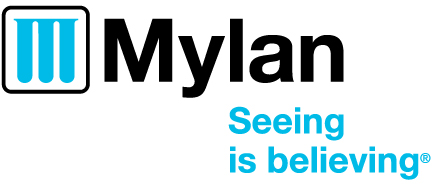Industry Symposia
All sessions will be held at the Grand Hyatt San Antonio, free of charge, and most are approved for CRCE. Attendance is limited. Pre-registered Congress attendees were invited via email to register for these symposia. However, there may still be space available. For availability and to register, check with the exhibitors that are presenting them. The AARC is not responsible for information presented at these sessions.
Saturday, Oct. 15
6:30 am–8:15 am Breakfast Symposia | Texas Ballroom, Salon A
Optiflow™ Nasal High Flow Across the Care Continuum
Professor Jean-Damien Ricard, Nord Val de Seine, Paris, France
Associate Professor Gonzalo Hernández, Madrid, Spain
Presented by Fisher & Paykel Healthcare

Learning Objectives
-
Identify the current evidence for Nasal High Flow (NHF) therapy, including mechanisms of action.
-
Evaluate the emerging and clinically signi cant applications for NHF therapy.
-
Discuss the evidence regarding the use of NHF, in a variety of settings.
This course has been approved for 1.0 hour of Continuing Respiratory Care Education (CRCE) credit by the American Association for Respiratory Care. Course number: 14698800.
Sunday, Oct. 16
6:00 am–8:00 am Breakfast Symposia | Texas Ballroom, Salons A–B
Insight into New Technologies in Respiratory Care through User Experience
Khris E. O’Brien, BA, RRT-NPS, Milwaukee, WI
Plinio Morita, PhD, MSc, PEng, Toronto, Canada
Presented by Getinge Group

Program Overview
We are pleased to invite you to the Getinge Group Breakfast Symposium 2016, where you will gain valuable insight into the evaluation of ventilation technologies with a focus on overall user experience and application of safe care practices. You will also obtain an in depth understanding of the role of new technologies in the application of Neurally Adjusted Ventilatory Assist (NAVA®), the advanced mode of ventilation.
Learning Objectives
-
Gain additional insight into in the evaluation of ventilation technologies from the perspective of both user experience and safety.
-
Better understand the role of new technologies in the application of the advanced mode of ventilation, Neurally adjusted ventilator assist (NAVA).
This course has been approved for 2.0 hours of Continuing Respiratory Care Education (CRCE) credit by the American Association for Respiratory Care. Course number: 147135000.
7:00 am–8:00 am Breakfast Symposia | Texas Ballroom, Salons D–E
Breatheology — Breathing For Better Health
Stig Severinsen, MS PhD, Aalborg, Denmark
Presented by Masimo

Program Overview
Stig Severinsen is a four-time World Champion freediver. Freediving consists of diving deep or long while holding your breath. He holds a Master’s degree in biology (2001) and a PhD in medicine (2007) from the University of Aarhus, Denmark. During the last decade he has practiced and investigated the beneficial effects of breathing and breath holding on body and mind. His latest Guinness World Records are 500 feet diving under ice and 22 min. breath-hold under water.
Learning Objectives
-
Discuss “conscious breathing” and its overall benefits to tidal volume (Vt).
-
Describe the basic physiologic benefits of breath-holding and its relationship to functional residual capacity (FRC).
-
State how optimized breathing promotes improved physical performance, resting heart rate, and total lung capacity (TLC).
-
Demonstrate breath-holding techniques and breathing exercises to improve ventilation perfusion ratio (V/Q) matching.
The sponsor has applied for Continuing Respiratory Care Education (CRCE) credit for this course through the American Association for Respiratory Care.
12:30 pm–1:35 pm Lunch Symposium | Texas Ballroom, Salon A
The Clinical Challenge of Idiopathic Pulmonary Fibrosis: What Respiratory Care Professionals Need to Know
Rebecca Keith MD, Denver, CO
Breathless Ambassadors:
Marilyn K. Glassberg, MD
Country Recording Artist Joe Nichols
This activity is supported by an independent educational grant from Boehringer Ingelheim

Program Overview
Meet the ambassadors of Breathless as they share their personal experience with IPF. Afterwards, Dr. Rebecca Keith will provide an overview of the clinical symptoms of IPF, how to methodically distinguish it from other interstitial lung diseases, and how to monitor for disease progression. The program will then conclude with a review of key recommendations for symptom management, focusing on the role of respiratory care professionals involved in patient care.
Learning Objectives
-
Heighten awareness of IPF by reviewing the diagnostic process and symptom identification.
-
Highlight key recommendations for symptom management.
-
Examine the key role of respiratory care professionals in IPF patient care.
Registration
Admission is complimentary and will be on a first come, first served basis. Lunch will be provided.
This course is a non-CME event and does not qualify for CME or CRCE credit.
5:30 pm–7:00 pm Wine & Cheese Reception | Texas Ballroom, Salons D–E
Guiding Patients Through Decisions in IPF: The Respiratory Therapists’ Role
Joyce Lee MD, MAS Aurora, CO
Trina M. Limberg BS, RRT, FAARC, San Diego, CA
Presented by Academy for Continued Healthcare Learning

Program Overview
This wine and cheese evening symposium will provide respiratory therapists with treatment option updates in idiopathic pulmonary fibrosis (IPF). IPF is a rare, progressive lung disease that greatly impacts patients’ quality of life and diminishes life expectancy. New therapies are available that slow lung function decline. These therapies are used in combination with oxygen supplementation, pulmonary rehabilitation, symptomatic treatment, and supportive care. Respiratory therapists need education on the new therapies and supportive care to educate and counsel patients with IPF, as well as optimize their care.
Learning Objectives
Upon completion of this activity, participants will be able to:
-
Outline the prevalence, signs and symptoms, and diagnostic criteria for IPF.
-
Compare and contrast available therapies for IPF.
-
Formulate strategies for comprehensive management of symptoms.
-
Effectively counsel IPF patients on available therapies and supportive care.
-
Identify patients with IPF who may benefit from intensification of therapy.
This course has been approved for 1.5 hours of Continuing Respiratory Care Education (CRCE) credit by the American Association for Respiratory Care. Course number: 147294000.
This activity is supported by an independent educational grant from Boehringer Ingelheim

Monday, Oct. 17
6:30 am–8:00 am Breakfast Symposia | Texas Ballroom, Salons D–E
Lung Protective Ventilation: State of the Art 2016!
Patient-Ventilator Asynchrony: Effects on Patient Outcome
Robert Kacmarek, PhD, RRT, FCCM, FCCP, FARC Boston, MA
Presented by Medtronic

Program Overview
We invite you to join us at AARC Congress 2016 for our breakfast symposium, Lung Protection and Patient-Ventilator Asynchrony.
Learning Objectives
-
Learn how to protect your patients from lung tissue damage during mechanical ventilation.
-
Discover new tactics in lung protection and reducing patient-ventilator asynchrony.
-
Find out how to use advanced software modes on the latest mechanical ventilators to help patients breathe more naturally.
This course has been approved for 1.5 hours of Continuing Respiratory Care Education (CRCE) credit by the American Association for Respiratory Care. Course number: 147423000.
6:30 am–8:00 am Breakfast Symposia | Texas Ballroom, Salons A–B
Pulmonary Pharmacology and IPV Delivery Systems: Current Challenges and Unresolved Issues
Richard D. Branson MSc, RRT, FAARC, Cincinnati, OH
Garry W. Kauffman RRT, FAARC, MPA, Walnut Cove, NC
Presented by HealthmattersCME

Program Overview
Pulmonary hypertension (Pulm HTN) can be characterized histopathologically by vasoconstriction, vascular proliferation, and remodeling and narrowing of small pulmonary arteries. If left untreated, these pathological changes result in a progressive rise in pulmonary artery pressure and pulmonary vascular resistance, which eventually leads to right ventricular failure and premature death. Pulm HTN is a condition that RRTs see and treat throughout their professional careers in patients with chronic lung disease. Inhaled pulmonary vasodilators (IPVs) play an important role in treating Pulm HTN, but the administration of these agents should be managed by RRTs and other HCPs, quali ed by education and experience in their use. The primary purpose of this activity is to improve the knowledge and competence among RRTs and other HCPs regarding the appropriate management of Pulm HTN, speci cally the evidence-based use of IPVs, including inhaled nitric oxide (iNO). This symposium will address the pharmacology of IPVs and the appropriate use, e icacy, and safety of inhaled vasodilator therapy in the clinical setting.
Learning Objectives
After completing this activity, the participant should be better able to:
-
Diagnose Pulm HTN based on the WHO classification system.
-
Define pathophysiologic mechanisms of Pulm HTN and the role of IPVs for the treatment of patients presenting with this condition.
-
Recommend optimal IPV therapy based on the pharmacology, safety, and efficacy of individual agents for patients with Pulm HTN who are candidates for this intervention.
-
Implement inhaled delivery of pulmonary vasodilator therapy for Pulm HTN based on differences among specific agents.
-
Approach with appropriate caution the use of aerosolized pulmonary dilating agents not formulated or indicated for use by inhalation.
This course has been approved for 1.0 hour of Continuing Respiratory Care Education (CRCE) credit by the American Association for Respiratory Care. Course number: 147280000.
12:30 pm–1:40 pm Lunch Symposium | Texas Ballroom, Salon A
Reassessing Maintenance Treatment for Your Patients With COPD
Manuel A. Suarez-Barcelo’ MD, CMD, Miami, FL
Presented by Mylan Specialty L.P.

Program Overview
This presentation will provide participants with an overview of COPD, the importance of reevaluating your patients’ profiles, and clinical review of an FDA-approved nebulized product used in the maintenance treatment of COPD.
Learning Objectives
Objectives of this presentation are to:
-
Discuss the unmet needs of COPD.
-
Define why it is important to reevaluate your COPD patients regularly.
-
List why a nebulized LABA may be used in the management of COPD.
-
Discuss the access and coverage of Perforomist among federal, public, and private payors.
Please register by providing the following information to Mylan:
-
First and last name
-
Affiliation
Specialty (RN, RPH, PhD)
Address
This course is not approved for Continuing Respiratory Care Education (CRCE) credit by the American Association for Respiratory Care (AARC).



